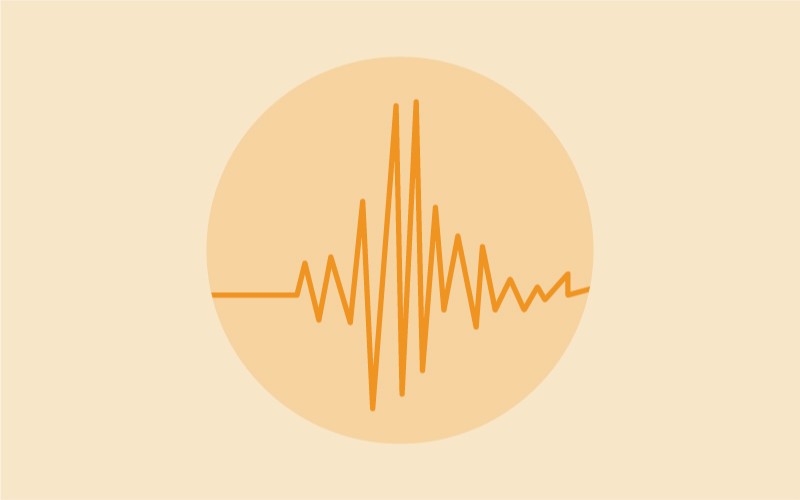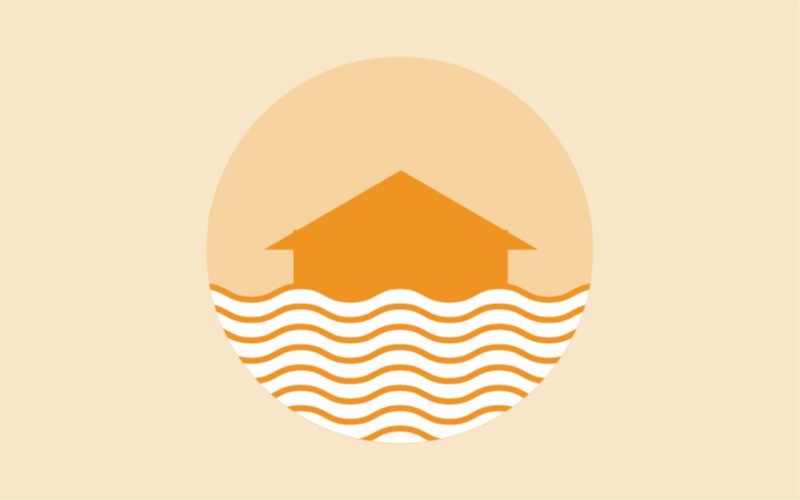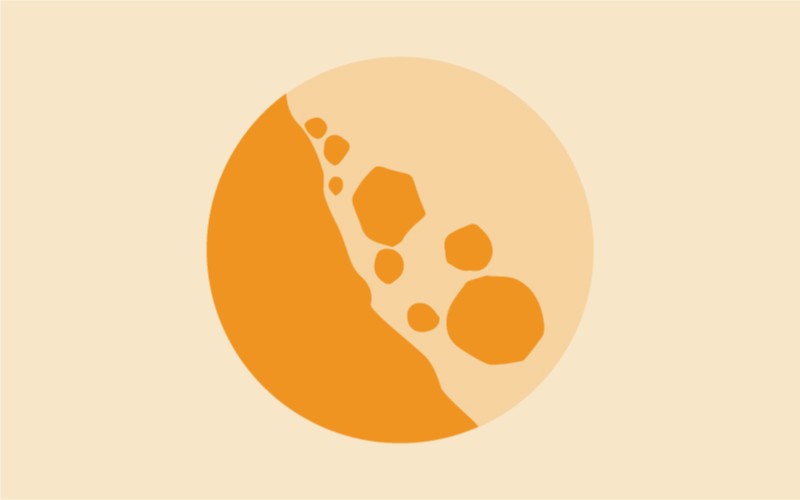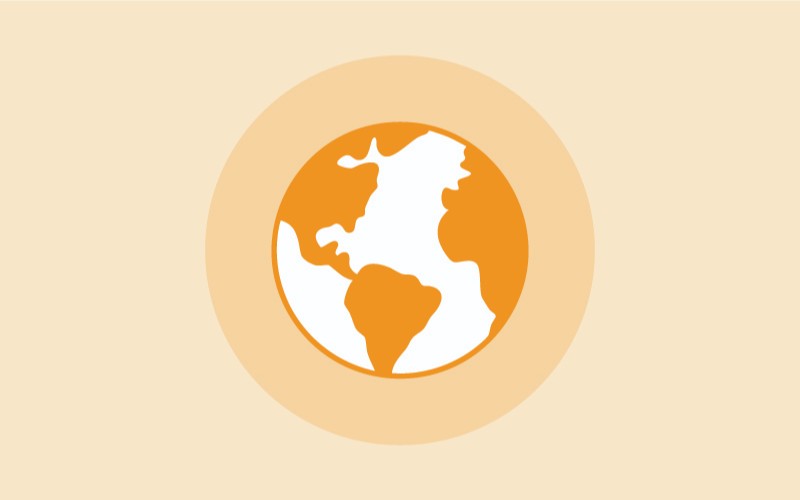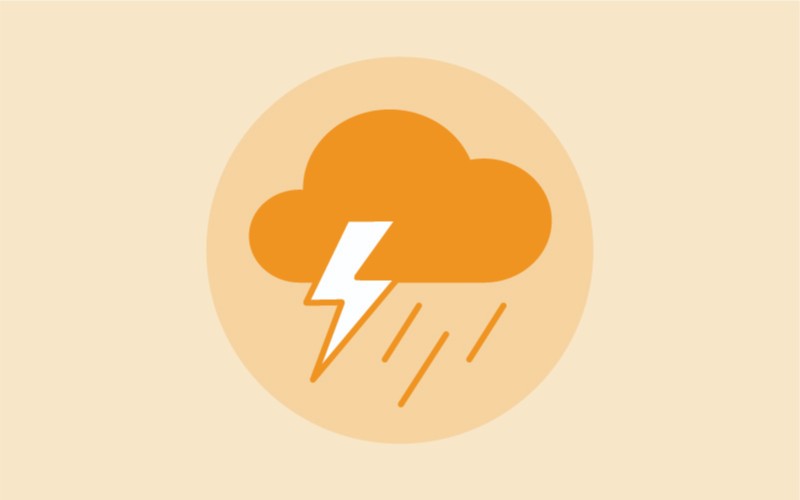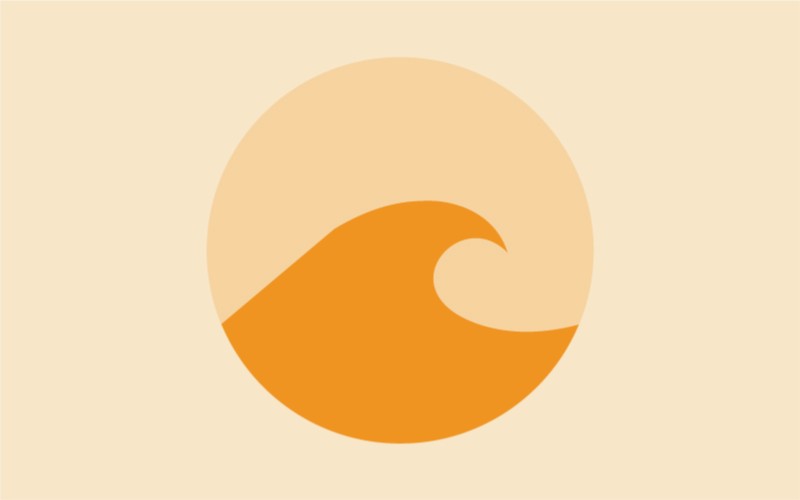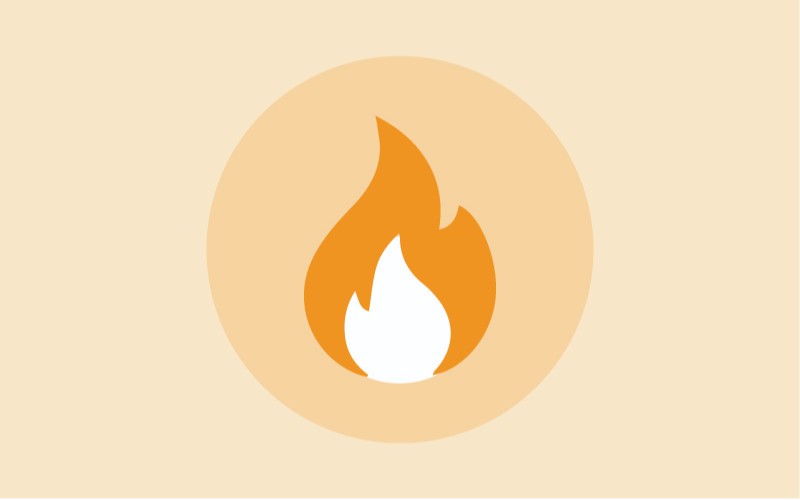Hazards - Emergency Management
Animal and Plant Pests and Diseases
The Ministry for Primary Industries leads New Zealand's biosecurity system, including responses to the outbreak of animal and plant pests and diseases.
Learn more about New Zealand’s biosecurity system on the MPI website
What to do if you think you've found a Pest or Disease that is new to New Zealand?
Early detection of harmful new pests and diseases is a vital part of our biosecurity system. Every New Zealander needs to be vigilant for and report suspected new organisms.
If you think you’ve found a pest or disease that is new to New Zealand:
- Call the Ministry for Primary Industries’ Pest and Disease Hotline, as soon as you find something, on 0800 80 99 66.
- Photograph it and catch it if it's safe to do so. Photos will help the MPI specialist interpret your finding.
Be extra vigilant when coming home from overseas, or opening international mail, because these are common pathways for unwanted pests to enter New Zealand.
Learn more about reporting a pest or disease that’s new to New Zealand on the MPI website
Drought
Every year, there are periods of dry weather that can have a disruptive impact on farms and local farming communities.
The Ministry for Primary Industries works with local stakeholders to determine how a drought should be classified, based on its impact on the rural sector.
Help is available to farmers, growers, and their families during drought and in the recovery period.
Learn more about dealing with drought conditions on the MPI website
Councils monitor and manage water supplies. When there is high demand on water or supplies are under pressure, councils may place restrictions on some uses, such as watering gardens.
Fire
If you see smoke or fire and believe there is a risk to people or property, call 111 and ask for 'Fire' immediately.
If you are not sure whether the smoke or fire is a real emergency or not, call 111 and ask.
Learn more about fire safety and what to do in the event of a fire on the Fire and Emergency website
Food Safety Incidents
The Ministry for Primary Industries leads New Zealand's food safety system, protecting the health and wellbeing of consumers here and overseas.
Learn more about New Zealand’s food safety system on the MPI website
Food Safety During Emergencies
Events that cause power cuts or disrupt your access to clean water could make your food unsafe to eat. It's crucial to follow food safety advice during these events to avoid getting sick.
Learn more about food safety during emergencies on the MPI website
Geothermal Activity
What is Geothermal Activity?
Geothermal activity occurs when heat is transferred from within the Earth to its surface. New Zealand is known worldwide for its geothermal features. Almost all of New Zealand’s geothermal systems are hydrothermal systems, which means groundwater is heated by hot rocks or magma and rises to the surface.
Geothermal activity includes:
- Hot pools.
- Boiling mud pools.
- Geysers: Hot springs with intermittent water eruptions, accompanied by steam.
- Fumaroles: Holes which emit superheated gas and steam under pressure.
Geothermal Hazards
Geothermal activity forms permanent features in some parts of New Zealand. The primary geothermal hazard is burns from the hot water or steam. Changes in hot spring activity can occur with volcanic activity. See the Volcanic Activity section for more information on volcanic hazards.
Geothermal Hazards Include:
- Boiling hot water: In many cases, geothermally-heated water can be hot enough to scald the skin, resulting in serious burns and even death.
- Boiling mud: Mud pools are unpredictable, and larger-than-normal eruptions can suddenly occur, sending boiling mud further than expected. Boiling hot mud can burn skin and clothing.
- Geothermal chemicals in water: Some geothermal water may be very acidic or very alkaline, and may irritate the skin, corrode clothing or oxidise jewellery.
- Geothermal gases and aerosols: Geothermal gases include carbon dioxide (CO2), hydrogen chloride (HCl), hydrogen sulphide (H2S) and sulphur dioxide (SO2). More information on volcanic and geothermal gases is available on the International Volcanic Health Hazards Network website.
Go to the International Volcanic Health Hazards Network website- Near vents and volcanoes, geothermal gases can be irritating to eyes, skin and breathing and can be lethal at high concentrations.
- Some geothermal gases are heavier than air and can build up in confined spaces such as hollows, caves, and sometimes rooms, displacing oxygen. In high concentrations, geothermal gases can be lethal to people and animals.
- Acid rain can occur when rainfall falls through a plume of volcanic gases and aerosols. Close to the vent, rainfall can be as acidic as freshly squeezed lemon juice. Acid rain can irritate the skin and eyes or cause a stinging sensation. Acid rain can also damage plants and accelerate the rusting of metal surfaces on buildings, vehicles, farm equipment, and infrastructure components. It may also impact the quality of surface waters and may kill fish in open ponds.
- Geothermally-altered ground: Geothermal activity can also form underground caves (tomo) beneath a thin, hard crust. The crust can suddenly give way under the weight of a person, sometimes into a scalding geothermal stream.
- Geyser eruptions: Geysers can erupt boiling-hot water infrequently and unexpectedly, and can scald the skin, resulting in serious burns and even death. Geothermal water also contains silica, which sticks to glass surfaces such as spectacles (glasses), camera lenses, watch faces, and car windscreens, causing permanent damage.
- Hydrothermal eruptions: When superheated ground water is trapped below the surface, it can rapidly convert from liquid to steam, expand, and erupt through the confining rock. Hydrothermal eruptions are caused by increasing the amount of steam present at shallow depth Hydrothermal eruptions almost always occur without warning and can be violent enough to be life-threatening. They can cause damage up to a few hundred metres away and can deposit boiling mud and ballistics (rock fragments ejected along fast, cannonball-like trajectories).
- Land deformation: Changes to the ground surface, such as swelling, sinking, or cracking. Land deformation can directly damage homes, cause landslides and change the risk of flooding as the ground moves. See the Landslide section for more information on landslide hazards. See the Flood section for more information on flood hazards.
- Steam: Although no steam can be seen, steam from fumaroles can be hot enough to burn. Steam from fumaroles and hot pools can also drift across roads, reducing visibility.
Health Hazards Associated with Geothermal Features Include:
- Amoebic meningitis: Hot pools can contain microscopic organisms (amoebas) that cause the disease amoebic meningitis. Remember to keep your head above water in hot pools. Further information on amoebic meningitis is available on the HealthEd website.
Go to the HealthEd website - Mercury in water: Geothermal waters contain chemicals including mercury, making geothermal water undrinkable. These chemicals also build up in fish, making fish found in geothermal streams and lakes unsafe to eat.
Hazardous Substance Incidents
The term hazardous substance refers to any product or chemical that has properties that are explosive, flammable, oxidising, corrosive, or toxic to the environment.
Fire and Emergency New Zealand is the lead agency for hazardous substance emergencies.
Learn more about hazardous substances on the Fire and Emergency website
Information and guidance on working with hazardous substances is available on the WorkSafe website and the Hazardous Substances website
Go to the WorkSafe website
Go to the Hazardous Substances website
What to do if you are affected by Hazardous Substances
If someone is exposed to a hazardous substance seek medical advice immediately by dialling 111.
More information about what to do if you are affected by hazardous substances is available on the Fire and Emergency New Zealand website.
Go to this information on the Fire and Emergency website website
What to do if you spill a hazardous substance
Call 111 immediately and ask for Fire if there is a hazardous substance spill.
More information about how to respond to a hazardous substance spill is available on the Hazardous Substances website.
Go to the Hazardous Substances website
Heat
Extreme heat and heatwaves have negative impacts on health.
Even small increases above average temperatures can harm those most vulnerable to heat.
Newborn babies, infants, elderly and those with serious long-term medical conditions are at greater risk when exposed to heat events.
It is important that everyone is aware of the health risks of heat and acts to protect their own health and the health of others during all periods of warmer weather.
Stay up to date with the latest temperature observations and forecasts from MetService Te Ratonga Tirorangi, New Zealand’s National Weather Service.
What is a Heat Wave?
There is no universal definition of a heat wave. The term is relative to the usual weather in the area and at that time of year. Commonly, a heat wave is described as a prolonged period of excessive heat (temperatures several degrees above normal for that place and time of year) that lasts for three to five days or more.
Reduction
To make your whare/home safer during a heat wave, you should:
- Make sure your whare/home is properly insulated, and put weather stripping around doors and windows, to keep cool air inside. This can also help to reducing your home’s power demands for air conditioning.
- Check air-conditioning ducts for proper insulation. Insulation around ducts prevents cool air from leaking and keeps it directed through the vents.
- Protect windows from the sun. Hang shades, draperies, awnings, or louvers on windows receiving morning or afternoon sun. Outdoor awnings or louvers can reduce the heat entering the house by as much as 80 percent.
- Consider installing an attic fan, which can vent warm air out of your attic to help keep your whare/home cool.
Readiness
Protecting your health
The best way to protect yourself from UV radiation from sunlight is to Slip, Slop, Slap and Wrap:
- Slip on clothing that covers as much skin as possible, such as a top with a collar and long sleeves, trousers, or long shorts or skirts. Fabrics with a tighter weave and darker colours will give you better protection from the sun.
- Slip into the shade of a leafy tree, building or shade sail. Plan your outdoor activities for early or later in the day when the sun’s UV levels are lower.
- Slop on sunscreen. Slop on plenty of broad-spectrum, water-resistant sunscreen of at least SPF 30. An average-sized adult needs a teaspoon of sunscreen for their head and neck, each limb and for the front and back of the body. Apply 20 minutes before going outside and reapply every two hours, or after being in water or sweating.
- Slap on a hat. Wear a hat with a wide brim or with flaps covering the ears and neck. More people are sunburnt on the face and neck than any other part of the body.
- Wrap on sunglasses. Choose close fitting, wrap around style sunglasses. Not all sunglasses protect against UV radiation, so always check the label for the sun protection rating.
Although anyone at any time can suffer from heat-related illness, some people are at greater risk than others. Be aware of those at greatest risk of heat-related illness. This includes:
- older people, especially those over 65 years of age, or living on their own and socially isolated
- people who have a serious or long-term illness, – including heart or lung conditions, diabetes, kidney disease, Parkinson’s disease or severe mental illness.
- people who may find it hard to keep cool, including babies, people who are bed bound, people with Alzheimer’s disease and people with drug or alcohol addictions.
- people who spend a lot of time outdoors or in hot places – including people who work outside and the homeless.
Talk to the members of your household about the steps they should take to stay safe in excessive heat. Everyone should know what to do in the places where they spend time. Some places may not be air-conditioned or safe during a heat wave, so plan alternatives.
To learn more about being SunSmart head to the SunSmart website or the Cancer Society website.
Go to the SunSmart website
Go to the Cancer Society website
Response
In hot weather, you should stay cool and out of the heat. Limit physical activity as much as possible, and stay hydrated.
Watch for signs of excessive heat exposure – particularly in people at a higher risk and young children. These may include:
- Heat rash – Small, red, itchy bumps.
- Heat cramps – Muscular pains and spasms, usually in the abdomen, arms or legs. Medical attention is required for those with heart conditions or on a low-sodium diet.
- Sunburn – Red painful skin that is warm to the touch. Severe sunburn may result in fever, blistering and severe pain and may require medical attention.
- Heat exhaustion – Heavy sweating, paleness, muscle cramps, tiredness, weakness, dizziness, vomiting, headache, fast and weak pulse, fast and shallow breathing. Medical attention is required if symptoms are severe or for those with heart problems or high blood pressure.
- Heatstroke/sunstroke – High body temperature (above 39.4 degrees Celsius), confusion, disorientation, unconsciousness, red hot dry skin (no sweating), throbbing headache, nausea, rapid strong pulse. If you see any of these signs, you may be dealing with a life-threatening emergency and immediate medical attention is required.
More information about the effects of high heat on health and how to treat them can be found on the Ministry of Health
Go to the Ministry of Health website
You can find more information about working safely in extreme temperatures on the WorkSafe website.
Go to the WorkSafe website
Protecting Pets and Other Animals
Pets, horses, and livestock are susceptible to difficulties from excessive heat. Very young and older animals, as well as animals with short snouts, are more susceptible to problems with heat. Animals do not perspire and rely on panting, wetting down, shade, cool earth, and drinking water for cooling. Animals cannot explain their needs, so it is up to you to take extra care during heat waves to ensure your animals’ needs are met.
- Check on your animals frequently to ensure that they are not suffering stress from the heat.
- Make sure animals are indoors or in the shade.
- Provide plenty of water for drinking as well as for cooling the animals. Water intake can double in high temperatures and humidity – you need to clean out farm dams on a regular basis to keep water quality and in good order.
- If the conditions are hot and damp for livestock, make sure you keep an eye on the spore counts for facial eczema as they will rise. Take regular spore counts.
- If you see signs of heat stress, call your veterinarian.
- Advice about caring for your pets and other animals after an emergency is available on the Ministry for Primary Industries website
Go to the MPI website
Lifelines Utilities Failure
Failure of lifeline utilities that provide vital services, such as electricity, gas, petrol, water, wastewater, telecommunications, roads, rail, ports, and airports, happens from time to time. Lifeline utility networks are vulnerable to natural hazards, such as earthquakes, floods, tsunami and landslides, but they can also be disrupted by other factors such as terrorism, or system breakdowns.
Small lifeline utility failures, such as short power cuts or a road affected by a small landslide, are relatively common and do not cause much disruption. However, widespread or long-term failure, such as power being cut for many days after a storm or earthquake, or a landslide blocking a main road for days, can cause distress or health issues for people and can affect the economy.
Make and practise your emergency plan, have a grab bag and emergency supplies.
Useful Links on the Get Ready Website
Major Transport Incident
Major transport incidents often have high death and injury rates and are generally localised occurrences. Major transport incidents could involve aircraft, helicopters, ferries, ships, trains, trainlines, buses, coaches and/or vehicles.
Damage to property and infrastructure from transport incidents is usually confined to a much smaller area than damage from natural hazards. However, the economic impact of a major transport incident can have short-term consequences for tourism, and the loss of a large aircraft or ship can have substantial financial implications.
Transport incidents are a common cause of hazardous substance releases or spills, which are hazards themselves.
The requirements for preserving evidence at the scene for investigators can mean that roads, airports and rail lines can be out of use for many days, causing disruption. Damage to infrastructure like bridges can also cause prolonged disruption.
New Zealand Police will lead the response to a major transport incident. Emergency services provide the initial response to all major incidents.
Road closure information is provided by Waka Kotahi New Zealand Transport Agency.
Go to the Journeys Planner on the NZTA website
Oil Spills
Most oil spills within New Zealand waters are likely to happen close to the coast or in harbours. This makes it extremely difficult for responders to prevent oil from reaching the shoreline. Depending on local weather, currents, and tides, any spilt oil can reach the coast within hours.
New Zealand’s response capability is maintained (and developed) through partnerships between Maritime New Zealand, Regional Councils, the oil industry, and overseas agencies.
Wildbase Oil Response, based at Massey University, works to minimise the damaging effects of oil pollution on wildlife. They undertake the care, rehabilitation and release of animals after a marine oil spill. The unit operates under contract to Maritime New Zealand and also work on oil responses internationally.
Learn more about response to marine oil spills on the Maritime NZ website
What to do if you find an Oil Spill
Call your regional council to report the spill as soon as possible.
Do not touch the spill and be careful not to breathe any vapours. Oil is toxic.
Do not touch any oiled birds or marine life without gloves.
What to do if you Spill Oil
Call your regional council to report the spill as soon as possible.
Even the smallest spill needs to be dealt with promptly so that rain cannot wash it into the storm water system and out to a stream or beach or even into a water supply aquifer.
You can help by stopping the spill getting into a storm water grate and cleaning it up without causing water pollution.
- Block off access to storm water grates with covers, sandbags or absorbent material.
- Contain the spill with sand or sawdust. Sweep up solids or powders and put them in a safe container.
- Dispose of the waste appropriately at a landfill.
Pandemic
A pandemic happens when an infection disease spreads quickly and affects many countries around the world. Pandemics can last for many months or years.
The Ministry of Health is the lead agency for planning for and responding to pandemics in New Zealand.
Learn more about preparing for a pandemic on the Ministry of Health website
COVID-19
COVID-19 is a type of coronavirus that can affect your lungs and airways. Like the flu, COVID-19 is spread from person to person. COVID-19 has affected many people around the world.
Terrorism
The New Zealand Police are responsible for leading responses to terrorism incidents. If you are involved in a terrorist incident, New Zealand Police advice is: escape, hide, tell.
Learn more about what to do in the event of a terrorist attackon the NZ Police website
Escape
- If you see a safe way out, leave the area immediately. Move quickly and quietly away from danger if it is safe to do so.
- Take your mobile phone with you if you can, but do not go back to get it if it puts you in danger. Leave other belongings behind.
- Encourage others to go with you, but don’t let their hesitation slow you down.
Hide
- If you cannot escape, stay out of sight and silence your mobile phone.
- Secure your environment by locking doors and windows and barricading entries where possible.
- Stay away from doors and windows.
- Stay as quiet and still as possible, so you do not give away your hiding place.
- Note any potential exit points.
- Consider looking for something you can use to defend yourself as a last resort if you are found by the attacker.
- If you come across any injured people while hiding, providing first aid may help save their lives. But only help if it does not put yourself and others in any danger.
- Do not leave until you are sure the threat has passed.
Tell
As soon as it is safe, call 111. The more information you can give about your location, surroundings, the attackers and the events that have occurred, the better. You may be asked to stay on the line and provide further information that the operator requests or if the situation changes.
If it is safe to do so, try to obtain the following information:
- Exact location of the incident.
- Description of the offender/s and whether they are moving in any particular direction.
- Details of any weapons being used.
- Number of people in the area and any that have been injured.
- The intent of the offender/s (if known or apparent).
In Crowded Places
Always try to be aware of your surroundings. If you see a commotion, hear screams, gunfire or loud noises, try to identify where it is coming from. If you think it is dangerous, consider what you can do to keep yourself safe. For example, you may have to hide before you have the opportunity to escape. In some situations, you may still need to hide once you have escaped the immediate area.
Try to stop others from entering the area, but only if it doesn’t put you in any danger.
Do not move closer to see what is happening - this may put you in danger.


